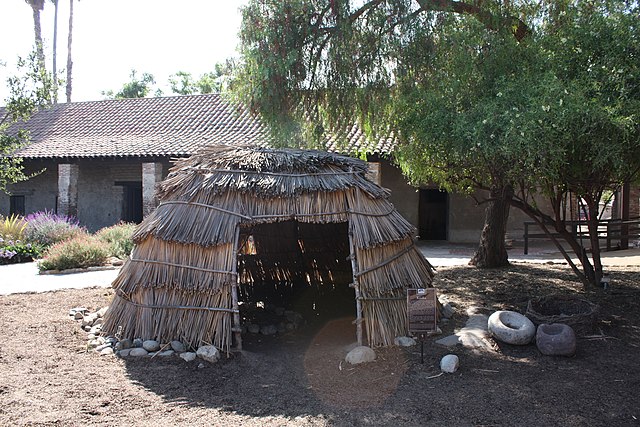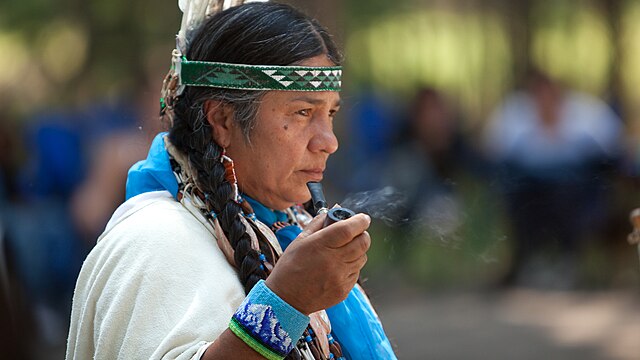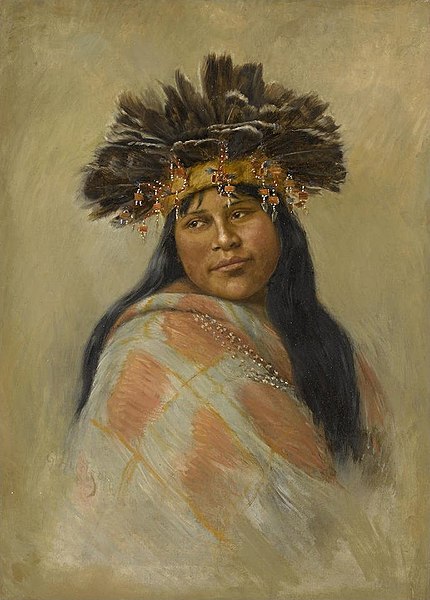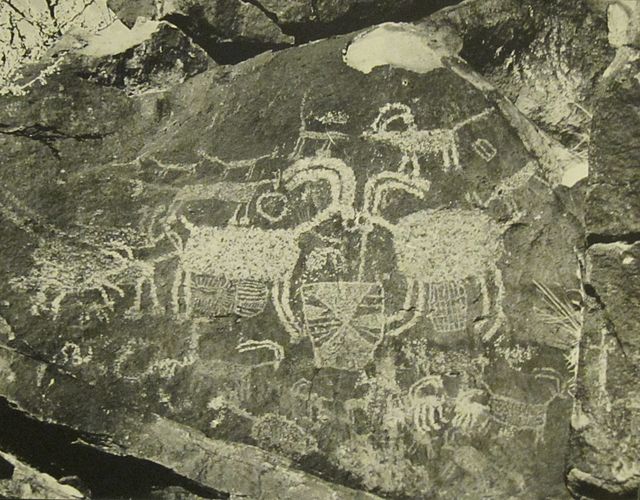The Acjachemen are an Indigenous people of California. Published maps often identify their ancestral lands as extending from the beach to the mountains, south from what is now known as Aliso Creek in Orange County to the Las Pulgas Canyon in the northwestern part of San Diego County. However, sources also show that Acjachemen people shared sites with other Indigenous nations as far north as Puvunga in contemporary Long Beach.
José de Grácia Cruz, an Acjachemen craftsman and bell ringer at Mission San Juan Capistrano, photo taken ca. June 1909.
Reconstruction of Acjachemen hut at Mission San Juan Capistrano
Acjachemen mortars
Clarence H. Lobo (1912–1985), elected spokesperson of the Juaneño Band of Mission Indians from 1946 to 1985. Lobo wore a Plain-style headdress, even though this was not customary for the Acjachemen.
Indigenous peoples of California
Indigenous peoples of California, commonly known as Indigenous Californians or Native Californians, are a diverse group of nations and peoples that are indigenous to the geographic area within the current boundaries of California before and after European colonization. There are currently 109 federally recognized tribes in the state and over forty self-identified tribes or tribal bands that have applied for federal recognition. California has the second-largest Native American population in the United States.
Winnemem Wintu chief Caleen Sisk in 2009
A Pomo dancer by Grace Hudson
The Coso Rock Art District in the Mojave desert contains about 100,000 petroglyphs.
A reconstruction of a traditional Yurok plank house.








